Support  Destinations Destinations |

Beijing
Beijing, the center of politics and culture since the 13th century, showcases China’s best art and imperial culture. In addition, today’s Beijing offers an excellent performance community, and a healthy variety of fine dining establishments.
Wander the Forbidden City like the Qing Emperor. Join the locals for a morning jog at the Temple of Heaven. Walk though China’s history and development at the National Museum. Or, if lucky, watch a concert at the National Center of Performing Arts, or the Great Hall of the People nearby. Stop in at the Moscow Restaurant: a taste of the city’s history. In dynastic times, this was the city’s most trendy and only western food restaurant. Or, take a sip of fresh craft beer at Jing A Brewpub, one of the best breweries hidden in the hustle and bustle Sanlitun area, and get a taste of the nightlife in Beijing.

Shanghai
The face of modern China, Shanghai is teeming with energy and activity, and offers travelers a true diversity of areas and experiences.
Walk along the scenic bund along Shanghai’s iconic Huangpu river, recalling the history and fantasy behind Shanghai’s tumultuous development. Get a bird’s eye view of Shanghai’s development in one of the cities skyscrapers, and visit Urban Planning Exhibition Center to see how the city became a global metropolis. Then, see the other, older side of Shanghai by renting a bike or strolling through the French Concession. Go to one of Shanghai’s time-honored bars to return to the feel of the colonial era.

Hong Kong
China’s more refined, southern outpost, Hong Kong characterizes a unique subset of Chinese culture. From the fast-paced dynamic financial sector to the elder retirees leisurely sipping milk tea or stopping in a traditional medicine store, Hong Kong contains those from all walks of life.
A visit to Hong Kong reveals what the mainland’s top cities can become if they continue their fast-paced development. Of course, enjoy the 5 Star luxury shopping and gourmet dining, with a good selection of Michelin star chefs. For a local experience, have a morning hike along the circle trail atop Hong Kong’s famous Victoria Peak. Cross Victoria Bay on a public ferry, and take in Hong Kong’s world class skyline.

Shandong
In the lower reaches of Yellow River, Shandong is defined by vast expanse of flat land, thriving folk art, and the Confucian culture. In the very southeast of the Shandong peninsula lies Qingdao, a beach resort city famed for its beautiful scenery, colonial architecture, and the Tsingtao beer.
Take a leisurely walk at the tree-lined avenues of Badaguan scenic area. Visit Qingdao Guest House, an interesting German-style castle, and learn the colonial history of Qingdao city. At the Little Fish Hill Park, take in the best panoramic views of the city and the seashore. Or, cross the Jiaozhou Bay through China’s longest undersea tunnel, and visit Xuejia Island (also known as the Phoenix Island). Drop by a small fishing village, and spend the afternoon at leisure on the island’s golden sand beach. Last but not least, do not miss the freshly-brewed Tsingtao beer.
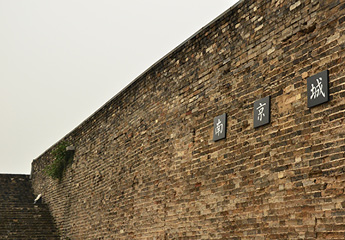
Jiangsu
The "Southern Capital," Nanjing served as the Chinese capital for long periods of the country’s history.
A short ride by high-speed bullet train (1hr) will take you from Shanghai to Nanjing, the bustling capital of Jiangsu province. Learn about China's modern history at Nanjing Presidential Palace, then take a stroll by the historical mansions on Yihe Road. After a visit to Linggu Temple's 14th century Beamless Hall, stop at the former residence of Chiang Kai-shek and Soong Mei-ling, Meiling Palace. Head out of the city to Qixia Mountain, and enjoy the serenity at the ancient Qixia Temple. Before departing Nanjing, be sure to take in an evening of traditional Kunqu Opera in an historical courtyard. Time permitting, nearby Yangzhou city's preserved residential compounds and gardens offer a peek into the lives of wealthy Qing Dynasty salt merchants.
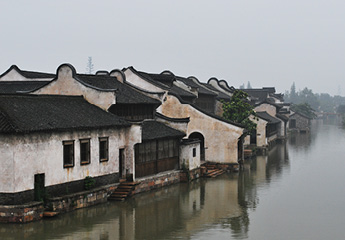
Zhejiang
Zhejiang, one of China’s developed and active economy, boasts of rich cultural and natural attractions. Its capital, Hangzhou, a city of “Heaven on Earth”, captures the essence of the beauty of mountains and water, and the harmony of green nature and fine living.
Walk the quiet trails along the divine West Lake in the summer as the periphery of the lake is covered in Lotus blossoms and green. Tea fanatics will enjoy a visit to one of the surrounding villages that produce China’s most famous green tea, Dragon Well Tea, and take a pleasant hiking at Nine Creeks. Relive imperial times with a leisurely morning at Linyin temple, meditating while its ancient chimes echo in the ear. Or listen to a TMC doctor explaining the history and treatment of the traditional Chinese medicine.

Shanxi
Literally meaning "West of the Mountains," for its location west of Taihang Mountain, Shanxi once served as the center of banking in China and is home to a rich collection of ancient temples, art and architecture.
Starting in Datong, explore the fifth and sixth century cave carvings at the Yungang Grottoes and take in the confluence of Buddhist, Taoist and Confucian influences at the Hanging Temple, which rests over sixty meters up in the air off the side of a mountain. In Pingyao Old Town, stroll on the ancient city wall and learn about the city's history as the nation's banking center at the former money exchange and government office. For a closer look into life for the elite of this era, visit the well-preserved courtyard home made famous in director Zhang Yimou's film, "Raise the Red Lantern" and, in a nearby village, the Wang Family Compound, once home to one of the most prominent families in the region. To round out your trip in Shanxi, do not miss the temples which dot famous Mount Wutai and two of the oldest existing wooden buildings in China at Foguang and Nanchan Temples.

Shaanxi
One of the main origins of Chinese culture, Shaanxi holds a distinct place in China’s history and growth as a world civilization.
Known as “Chang’an” before the Ming Dynasty, the deep historical roots of today’s Xi’an are a testament to the city’s importance to past dynasties. Practice Chinese calligraphy with a master and connect to the ancient art of writing. Visit the world renowned Terra-Cotta Warriors, and see the current excavation efforts still underway. Stroll through the local markets, and discover the vibrant Muslim culture. Learn the region’s rich history at Shaanxi History Museum, or appreciate the great archaeological discoveries at Hanyangling Mausoleum.
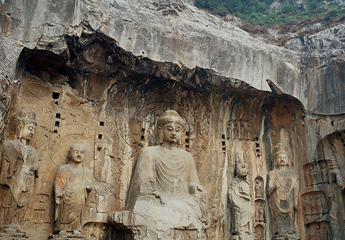
Henan
Henan, a central province straddling both banks of the Yellow River, is heralded as the cradle of Chinese civilization and served as China's economic and political center for two millennia.
A short ride by high-speed train (~1.5hrs) from the ancient capital of Xi'an will bring you to another historic capital, Luoyang. Explore the invaluable statues, steles and architecture of the White Horse Temple, the very first Buddhist temple in China. At Longmen Grottoes, appreciate the Buddhist art of this UNESCO site. For those interested in Chinese martial arts, you can catch a live performance and work on your technique at none other than the world-famous Shaolin Temple.
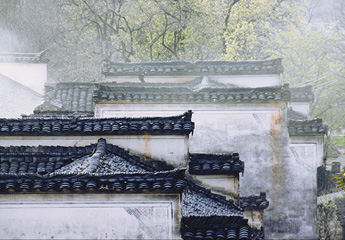
Anhui
Anhui province is known at home and abroad, if not always by name, for its breathtaking mountain landscapes and Ming and Qing Dynasty villages famously depicted in classical Chinese brush paintings.
Find yourself in the picturesque Hongcun Village, where comprehensive waterways connect over a hundred well-preserved Ming and Qing Dynasty homes. Less visited, Lucun Village offers a quieter experience. Walk through the fields and step into one or two old houses of the Lu family to see exquisite wood carvings. Last but not least, a trip to Anhui would not be complete without a hike – or cable car ride – up iconic Mt. Huangshan (Yellow Mountain), with views from its summit of the mist and clouds below.
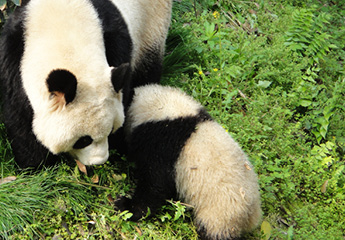
Sichuan
The home of pandas, face changing, and spicy food, Sichuan reflects China’s laid back lifestyle.
Sip an exquisite cup of tea while watching the locals play Majiang, or visit a local vegetable market to pick up fresh produce for a cooking class. Watch one of Sichuan’s renowned face-changing performances. Embrace baby pandas in one of Sichuan’s panda breeding centers. Spicy enough? Sichuan’s temperate climate produces some of the best spices in China. Blow your taste buds out and refresh with a cold beer during a famous Sichuan hotpot dinner.
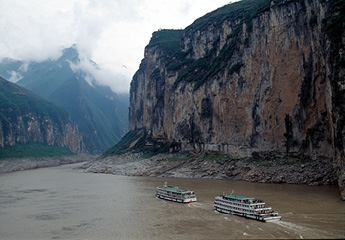
Chongqing
A city of steps rising up at the juncture of the Yangtze River and its tributary Jialing River, the mega-city of Chongqing is the epitome of rapid economic development in western China. At the same time, there is much to be explored from its past.
In Ciqikou Old Town, walk through the traditional alleys and have a glimpse into Chongqing's past. Take in the cliffside Dazu Rock Carvings which provide insight into the social and religious life in the region from the 9th through 13th centuries. From Chongqing, it is also an easy ride downstream on a luxury cruise to Yichang, sailing through the scenically stunning Three Gorges of the Yangze River.

Guizhou
In the countryside of China’s southwestern province, Guizhou, diverse ethnic minority villages are separated by lush, terraced hills.
Experience the rich cultural traditions and the quieter, slower pace of life of Guizhou’s colorful countryside, as you hike along picturesque terraces and villages scattered on distant mountains, bask in the warm afternoon sun and chat with local families in a peaceful Dong village, or, party time: dance up with the local villagers around a bonfire.

Yunnan
With its diverse ethnic minority cultures, bio-diversity, and stunning landscapes, Yunnan province in southwest China sits prominently near the top of many world travelers' "must see" lists.
In the province's northwest, the city of Lijiang, so named by Kublai Khan, was once an important hub along the Ancient Tea and Horse Caravan Trail. Here, step into a local Naxi courtyard home to learn about the ancient Dongba script from a local expert, and enjoy stunning views of Jade Dragon Snow Mountain. For the adventurous, hike through lush Wenhai valley to visit remote mountain villages. In the evening, connect to the past through the live music of a traditional Naxi orchestra. From Lijiang, venture further north to Zhongdian, renamed as "Shangri-La" after the mythical utopia described by James Hilton in Lost Horizon. Get a glimpse of the "real" Shangri-La, from chatting with villagers in their homes, to savoring the local specialties, to being the guest of a high lama in the most important Tibetan Buddhist monastery in the region.

Guangxi
Forming a cross-pattern of limestone karsts and rice paddies, Guangxi represents China’s classic landscape.
The rich south China culture that formed along the Li River makes for a great outdoorsy retreat with family and friends. Cycle along the flowing Yulong River in Yangshuo’s countryside and enjoy a beautiful sunset over the picturesque landscapes. Hike through the terraced fields in Longsheng. When the terraces are filled with water, the mountains and sky appear as one.

Inner Mongolia
Comprising a large portion of China's northern border, Inner Mongolia, formally known as the Inner Mongolia Autonomous Region, offers an opportunity to explore a diversity of traditions and histories.
In the regional capital of Hohhot, make your way to Dazhao Temple, one of the oldest Buddhist temples in northern China, and nearby Xilituzhao Monastery, the leading Gelugpa (Yellow sect) Buddhist monastery in Inner Mongolia. Roughly halfway between Hohhot and Baotou city, 16th century Meidaizhao village was built by Mongolian leader, Alatan Khan, and once served as his royal residence. Meidaizhao's city walls, royal venues and temples reflect a mixture of Mongolian, Han and Tibetan influences. Be sure to also visit Wudangzhao Monastery, which ranks right after the Potala Palace in Tibet and Kumbum Monastery in Qinghai for its importance in Tibetan Buddhism.

Ningxia
Ningxia, or the Ningxia Hui Autonomous Region, provides insight into the lives of prehistoric humans from thousands of years ago, as well as into the history of the Western Xia Kingdom from the 11th through 13th centuries.
In Yinchuan, the capital of the Western Xia Kingdom, see the distinctive Islamic architecture at Nanguan Mosque. Visit the famous Western Xia Imperial Tombs, dubbed the "Pyramids of China." Before departing Ningxia, drive into the Helan Mountains and study the petroglyphs in situ.

Gansu
Situated between the vast Tibetan and Loess plateaus, and bordering six other provinces and autonomous regions, Gansu province offers a distinctive glimpse into Silk Road history and ancient Buddhist history and practices.
At the Gansu Provincial Museum, learn about Lanzhou's history as a former garrison town along the Silk Road. In Xiahe, visit the largest Buddhist monastic university in the entire Tibetan area, Labrang Monastery. And, at its sutra-printing house, try a hand at ancient woodblock printing. In the very north of Gansu province lies Dunhuang, once a trading hub on the ancient Silk Road. Study the incomparable mural paintings and Buddhist sculptures at Mogao Caves. Enjoy a camel-ride, and watch the sun setting over the rolling sand dunes of the Gobi Desert.

Xinjiang
In the far western borderlands of China, Xinjiang’s diverse communities and traditions reflects its history as a major thoroughfare along the Silk Road that connected the East and West, and as a part of numerous empires from across the region.
Learn the past glory of ancient Gaochang Kingdom at Bezeklik Cave. Amid Taklamakan Desert, visit a small village where people still live in the old way – canoeing and fishing. Appreciate the exquisite frescoes at Kizil Thousand Buddha Caves, and find traces of the confluence of different religions and cultures. Cycle through Kashgar’s peaceful countryside, and sing and dance with a Uygur community as evening falls. Or venture through the snow-capped Tianshan Mountains to explore the other side of Xinjiang – flowery meadows and crystal lakes – the home of the Mongolian and Kazakh people… In the vast and varied Xinjiang, you will find yourself waking up to the scent of boiling milk tea on the grasslands, or sitting in a traditional donkey cart en route to a bustling bazaar – all while journeying across the deserts, grasslands, wetlands, and snowcapped mountains of Xinjiang.
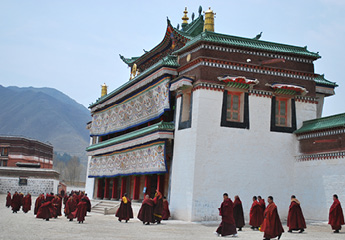
Qinghai
A natural wonderland, Qinghai sits on the vast Qinghai-Tibet plateau and brims with a diverse ethnic culture. The breathtakingly beautiful valleys and mountains in Qinghai’s countryside make for some of the best trekking in China.
Visit one of the six great monasteries of Gelupa sect – Kumbum Monastery. Walk around at the remarkable Dongguan Mosque for its magnificent architecture and history. Tour Qutan Temple, a forgotten gem referred to by experts as the “Imperial Palace of Northwest China,” and appreciate its well-preserved Ming Dynasty architectures and exquisite mural paintings. Or, venture to Yushu Tibetan autonomous prefecture, where the Tibetan Buddhist culture is less disturbed than in Tibet proper. Here, the centuries-old traditions are still very much a part of daily life, and nature awaits you at every turn, from the horseback racing festivals, the active monasteries, to the flowery grasslands, and diverse wildlife at the headwaters of Asia’s three great rivers.
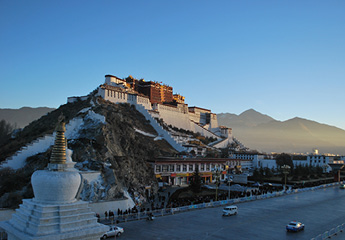
Tibet
From the breathtaking Himalayan landscapes emerged the spiritual powerhouse of Buddhism. Sacred, spiritual, distant, and exotic, Tibet captures the world’s imagination.
Walk the Kora pilgrimage route around Jokhang Temple, the heart of Tibetan Buddhism. Visit a small nunnery to understand Buddhism on a deeper level. Meet a local Tibetan doctor, learning how traditional Tibetan medicine combines tradition and religion. Sip a leisurely cup of yak butter tea and stare out the window over Tibet’s lively Barkhor market. Or visit Ton village, a small village in a remote mountain valley, to see how the local villagers hand-make Tibetan incense, a century old tradition.